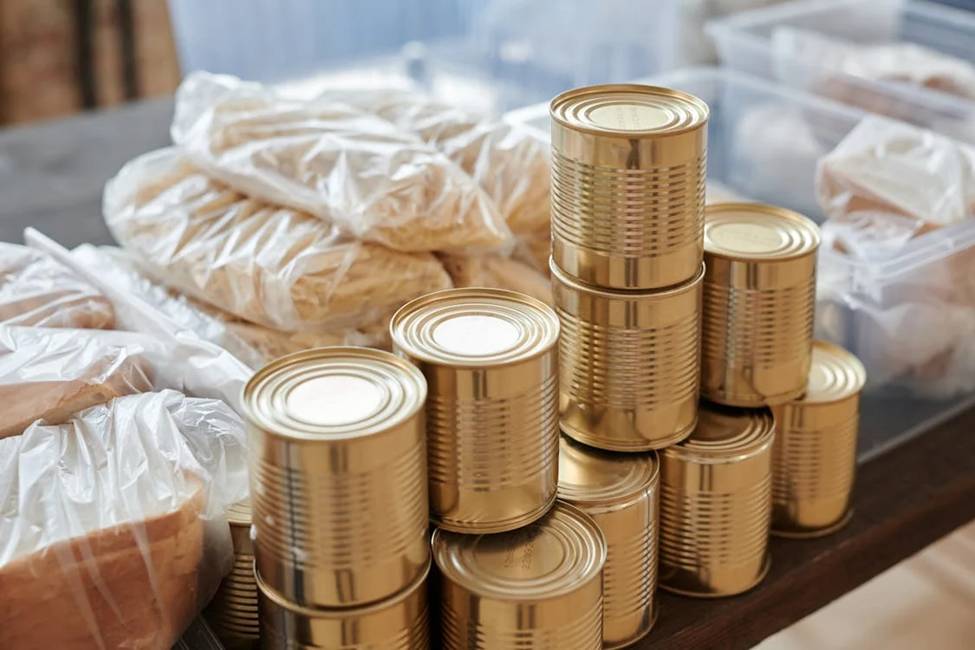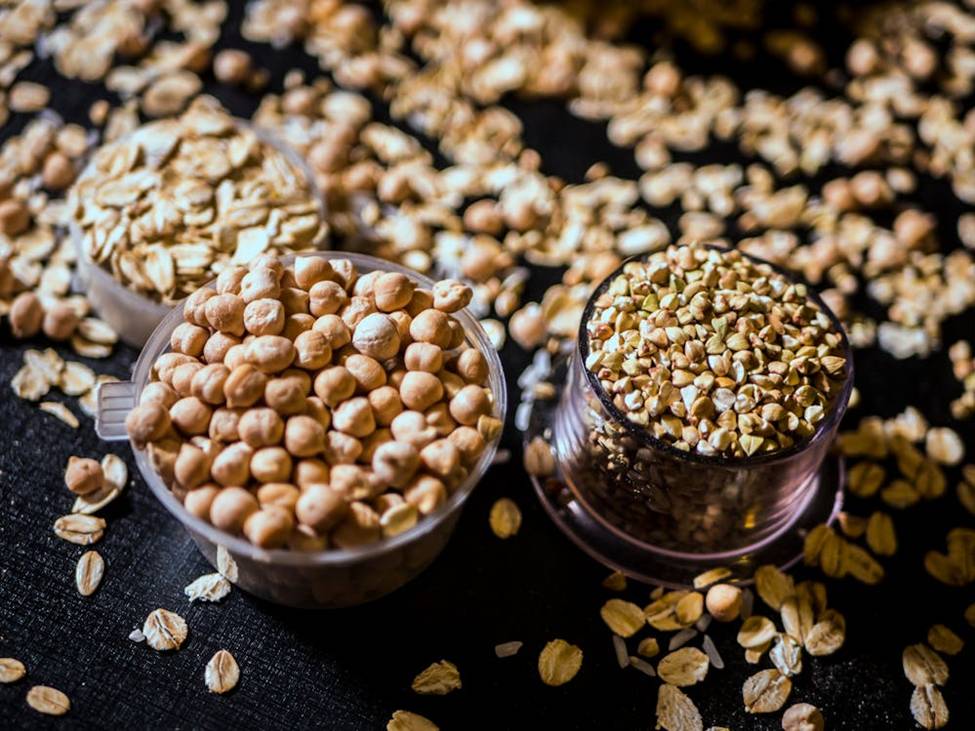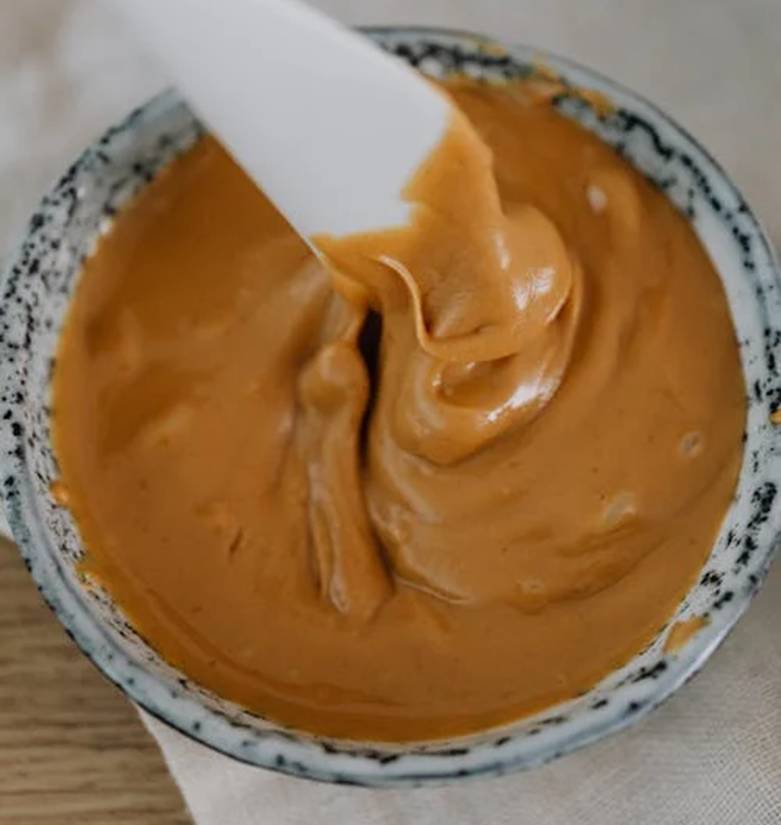Building an Emergency Food Supply Stash: What to Know


You shouldn’t be waiting for a disaster to build an emergency food supply stash. Even squirrels know that winter happens once per year. Besides, you need only look at the price of eggs to know that your ability to provide sustenance for yourself and your loved ones hinges on the comically tenuous “reliability” of the American dollar. Therefore it behooves you to build an emergency food stash, not only for a rainy day, but to practice preparedness and self-reliance. Here are some high-level notes.
Dry Goods
As a general rule, most dry goods are more or less imperishable, even though they may lose flavor over time. They also need to be protected against both pests and oxidation (exposure to the air). There are many viable types of dry goods, including but not limited to flours, sugar, cereal, grains such as rice, corn meal and oatmeal, as well as desiccated beans, peas, and lentils. Freeze-dried fruits, vegetables and mushrooms also have a very long shelf life.


Prepared foods such as crackers, biscuits, and other dry baked goods also tend to last a long time in a jam, and don’t require any refrigeration or other climate control. The caveat with dry goods is twofold. Even though they last a long time, they must be protected against pests, air and moisture. Whatever you store your dry goods in, make sure it is airtight and waterproof; air exposure will make them go stale and can make any oils in them go rancid, and moisture can cause microbial contamination and mold growth. If you store dry goods in bulk, it is also imperative to store them in tough, durable, inaccessible containers that, at the very least, attempt to withstand the teeth of mice and other critters.
Canned Goods
The good thing about canned foods is that they are even more imperishable than dry goods. Don’t be fooled; even though there is technically an expiration date on cans, they’re really good for as long as no air gets inside (though they might not taste as good in 50 years as they would today).
Regardless of what canned goods you prefer to enter into your stash of emergency food supplies, good practice is to protect against extreme temperatures. Freezing temperatures can cause cans to burst, which will cause spoilage. Also, moisture exposure can cause rust, which can compromise the can’s seal
Otherwise, canned meats and fruits are vital, as meats contain life-sustaining proteins, fats, and calories, and fruits that are high in vitamins and minerals (notably vitamin C) can help prevent nutritional deficiencies like scurvy.
Oils and Nut Butters


Oils like vegetable oil, corn oil, canola oil and olive oil are all valuable and will last a long time, as long as they are not contaminated by moisture. They give you the flexibility to fry foods (adding calories) and much more. A piece of bread dipped in oil has many more life-saving calories than a piece of dry bread, for instance. Then there are nut butters, like almond and peanut butter, which are rich in sugars, fats, and energy, and which are shelf-stable for many months under normal conditions. The one catch with these oil rich foods is that, while they do have a long shelf life, exposure to air will eventually cause them to go rancid - so you can’t really build a very long-term emergency food supply with them alone.
MREs: Expensive but Can Be Practical
MREs are meals, typically either dried or freeze-dried and packed in an airtight container, that can be heated and rehydrated, making them effectively ready-to-eat (hence the name MRE which is a military designation for “meals, ready-to-eat). Because they have effectively an indefinite shelf-life, can be calorie and nutrient rich, and require minimal preparation, your emergency food supply should contain at least a few MREs. The one caveat is that they are expensive compared to dried goods, canned goods and other commodities.
Honey


Honey is another thing that should be in your emergency food supply for two very important reasons. It is packed with sugar, which can sustain you with energy for short periods of time when no other food is available, and it miraculously has no shelf life - you can store it forever.
A Note on Frozen Goods
Another option for creating an emergency food supply stash is to choose frozen goods. Freezing can be a practical way to store meats, fruits, and other perishable, fresh foods, and will preserve them for as long as freezing temperatures are maintained. There is one big caveat with frozen foods, though. If you don’t have access to electricity, it is not a viable option. As long as you have access to the grid or a generator, you should be good to go, but you absolutely must diversify with other foods - such as MREs, dry goods and canned goods, in order to hedge your bets against uncertainty.
The Long-Haul and an Investment in Self-Sufficiency: Heirloom Seeds
In the spirit of proper exposure to disaster preparedness, we have to leave you with a note on heirloom seeds. Heirloom seeds are seeds that grow heirloom cultivars. That is, the plant that you grow will produce seeds that will yield fertile, viable offspring. Say you grow an heirloom tomato. You can take the seeds from that tomato which you grew and use it to grow another generation of tomato plants that will bear fruit.
This is an absolutely critical piece of information to be aware of, as most commercially available cultivars of plants are hybridized. They will produce one crop, but all subsequent generations will be infertile. That is, if you grow a hybrid tomato and take the seeds from it, it will grow a plant but you will get no tomatoes. Investing in heirloom seeds one time will set you up for preparedness for the indefinite future, as you can keep recycling last year’s crop into the following year - and that is one of the ways in which self-reliance is attained.
Shop Emergency Food Supplies Here
Getting your readiness list in order? Building up your emergency food supply stash? Check out what we offer in our catalog via the previous link and get in touch with us if you have any questions.